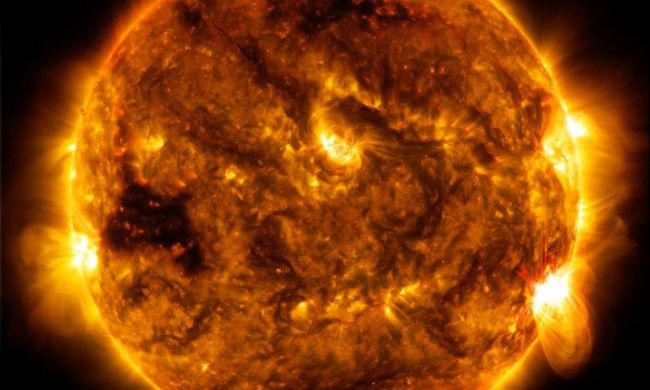NASA’s Parker Solar Probe, a sun-investigating spacecraft that made history last year when it flew through the sun’s corona, has made another swing around the sun. And this time it was watched by both other spacecraft and by ground-based telescopes.
Missions like Parker get close to the sun by performing a series of flybys of other planets. This spacecraft makes passes around Venus, and it uses the planet’s gravity to adjust its trajectory as it moves back toward the sun. Over the course of seven Venus flybys, it will get closer and closer to the sun until it moves into its final altitude, coming within 4 million miles of the sun’s surface in December 2024.

Parker’s most recent close approach to the sun was on February 25 and was its 11th close approach out of a planned 24. But this particular approach is special because it is visible from Earth. “Most of these passes occur while the sun is between the spacecraft and Earth, blocking any direct lines of sight from home,” NASA explained in a blog post. “But every few orbits, the dynamics work out to put the spacecraft in Earth’s view – and the Parker mission team seizes these opportunities to organize broad observation campaigns that not only include telescopes on Earth but several spacecraft as well.”
This approach was observed by more than 40 different observatories, including the brand-new Daniel K. Inouye Solar Telescope in Hawaii. Other observatories tuned in as well, observing in the visible light, infrared, and radio wavelengths. These were backed up by observations from several spacecraft including NASA’s Solar Dynamics Observatory and the NASA/ESA Solar Orbiter.
These observers won’t actually be able to see Parker, which is too small to detect. But they will be able to get a big-picture view, to see how the fluctuations of the sun which Parker sees up close ripple out to have effects on the rest of the solar system. Once Parker sends back its data, this can be compared to data collected by the other observatories to see how solar winds propagate on a larger scale.
Parker also observed another big event up close recently, when it captured data from a large solar prominence on February 15. “The shock from the event hit Parker Solar Probe head-on, but the spacecraft was built to withstand activity just like this – to get data in the most extreme conditions,” said Project Scientist Nour Raouafi of the Space Exploration Sector. “And with the sun getting more and more active, we can’t wait to see the data that Parker Solar Probe gathers as it gets closer and closer.”



